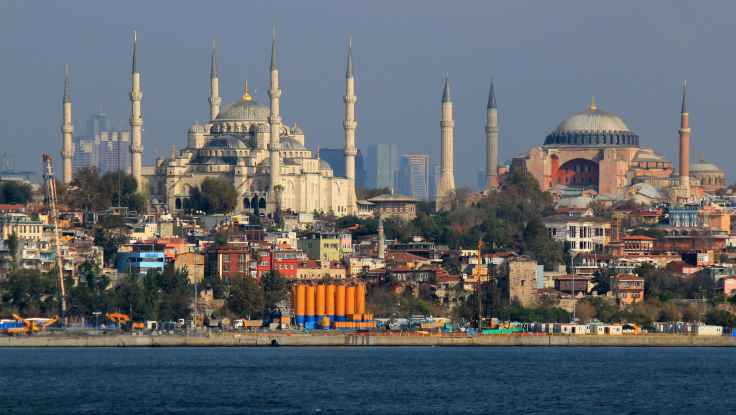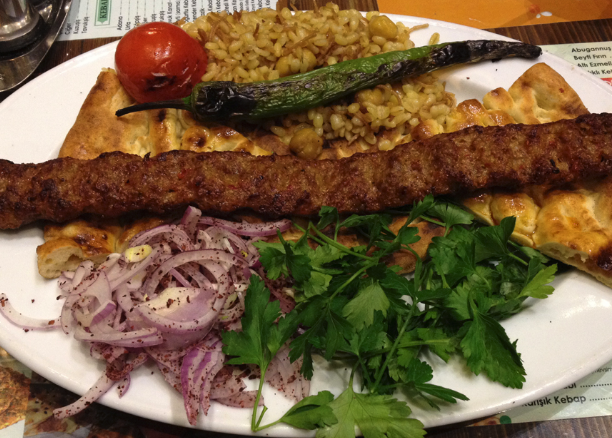I’m a wannabe classical guitar player. The trouble is, I’m too bloody old to practice enough to get to the standard I’d like to reach. So, I lied. I’m not really a guitar player. But I do listen to a lot of classical guitar and have, over time, convinced myself that I’m a talented-albeit-vicarious musician. Woulda, coulda, shoulda, I know.
Sheep Father.
A couple of years ago I bought a compilation CD of the virtuoso guitarist John Williams, playing all sorts, from Spanish to Greek, to full concertos. Tucked away on the CD was a gem I’d never heard before; a 4 movement piece, clearly influenced by Middle Eastern music, called Koyunbaba. It was composed by an Italian, Carlo Domeniconi, who was born in 1947 in Cesena, Italy. He’s known for exploring many different national styles of music, but appears to have developed a particular love for the sounds and songs of Turkey, where he lived and studied for 3 years in the late 1970s. He founded a school of classical guitar at Istanbul University Conservatory.

Koyunbaba was a Turkish saint, otherwise known as Seyit Ali. The name literally means sheep father, which is slightly concerning to be honest, but I digress. The Turkish name intrigued me as I lived in Ankara for 2 years in the early nineties. And I fell deeply in love with Istanbul the first time I visited; it’s a huge, smelly, dynamic city that’s neck deep in the back-and-forth history of Asian and European cultures.
Bedroom. Bodrum. Whatever.
The piece itself is named after a village of the same name, now a neighborhood of the popular seaside town of Bodrum in southwestern Turkey (nicknamed Bedroom by some of the younger tourist crowd for reasons you can probably guess.) Visit Turkey for long enough, and sooner or later you’ll be drawn to the southwest coast with its isolated coves and bays, and crystal blue waters.
Koyunbaba begins peacefully enough. The Turkish influence comes through strongly with the slightly dissonant harmonies and non-standard guitar tuning. It reminds me of time I spent on the Black Sea coast. One of our field assistants was a traditional bağlama (Turkish lute/guitar) player and we spent many happy hours tucked away in the back of shops and hotels on the coast road, drinking Rakı (pronounced rack-uh) and listening to his repertoire of Turkish songs. He wasn’t the finest player, but we couldn’t have cared less.

The real fireworks kick off in the third movement; a devilishly fast movement that sounds vaguely like Angus Young’s opening riff on AC/DC’s Thunderstruck. I know, I’m pushing it, but you’ll see what I mean. John William’s recital of Koyunbaba defies belief; the speed and precision with which he plays the third movement is astonishing.
It all wraps up with a lovely recapitulation of the opening theme. So go take a listen. Italian classical composition meets Turkish musical influence with immensely satisfying results. The youtube video below, my second posting of the piece, is of Domeniconi playing his own work so I’m guessing it’s as close to the original spirit of the composition as you’re likely to hear. It’s old and a bit scratchy, and he seems to struggle in one or two spots in the 3rd movement, but that only makes it more charming.
As a bonus, here’s the first movement of the same piece played by Eden Karamazov on a traditional lute –a fiendish looking instrument- which imparts a much more authentically Turkish sound to the piece.
And here’s another gorgeous composition by Domeniconi- “Variations on an Anatolian Folk Song” . If you’ve not been to Turkey, Anatolia is the traditional name given to the rump of western Turkey, roughly two thirds of the Asian part of the country, across to Istanbul and the Aegean coast.
Enjoy.
My next musical interlude will probably be another favourite of mine, another composer for classical guitar, but this time from the late 18th Century, Fernando Sor.

